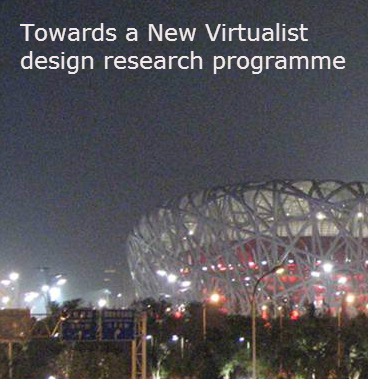Towards a New Virtualist Design Research Programme
DOI:
https://doi.org/10.7577/formakademisk.507Keywords:
Towards a New Virtualist Design Research ProgrammeAbstract
This paper considers how the influence of computer-cyber networks informs a new way of seeing on the part of designers as well as design researchers. In an adaptation of the notion of “virtual realities” made possible by computer technology, this new way of seeing is termed the New Virtualism. The INTRODUCTION suggests that this computer-cyber way of seeing is only the third paradigm shift in Western architectural history, following design predicated on the paradigm of the human body (1) and the machine (2). These three paradigms, following Tzonis and Lefaivre, are termed epiphores. After the introduction, PART I outlines implications of New Virtualist ways of seeing as expressed design trends, in terms of style. This is followed by PART II, in which is addressed seven ways New Virtualism can impact design research. The paper suggests that, while cyber technology vis-à-vis design might encourage some excesses of expression, cyber technology vis-à-vis design research actually helps to return design inquiry to constructs previous to the positivism inherited from the Enlightenment outlook. In other words, a New Virtualist design research programme can accommodate the qualitative aspects of design research more comfortably than the science-based positivism derived from the machine epiphore. This in turn promises new qualitative horizons for design research.

Downloads
Published
How to Cite
Issue
Section
License
Authors who publish with this journal agree to the following terms:
- Authors retain copyright and grant the journal right of first publication with the work simultaneously licensed under a Creative Commons Attribution 4.0 License that allows others to share the work with an acknowledgement of the work's authorship and initial publication in this journal.
- Authors are able to enter into separate, additional contractual arrangements for the non-exclusive distribution of the journal's published version of the work (e.g., post it to an institutional repository or publish it in a book), with an acknowledgement of its initial publication in this journal.
- Authors are permitted and encouraged to post their work online (e.g., in institutional repositories or on their website) prior to and during the submission process, as it can lead to productive exchanges, as well as earlier and greater citation of published work (See The Effect of Open Access).
- The author(s) must manage their economic reproduction rights to any third party.
- The journal makes no financial or other compensation for submissions, unless a separate agreement regarding this matter has been made with the author(s).
- The journal is obliged to archive the manuscript (including metadata) in its originally published digital form for at least a suitable amount of time in which the manuscript can be accessed via a long-term archive for digital material, such as in the Norwegian universities’ institutional archives within the framework of the NORA partnership.
The material will be published OpenAccess with a Creative Commons 4.0 License which allows anyone to read, share and adapt the content, even commercially under the licence terms:
This work needs to be appropriately attributed/credited, a link must be provided to the CC-BY 4.0 licence, and changes made need to be indicated in a reasonable manner, but not in any way that suggests that the licensor endorses you or your use.



